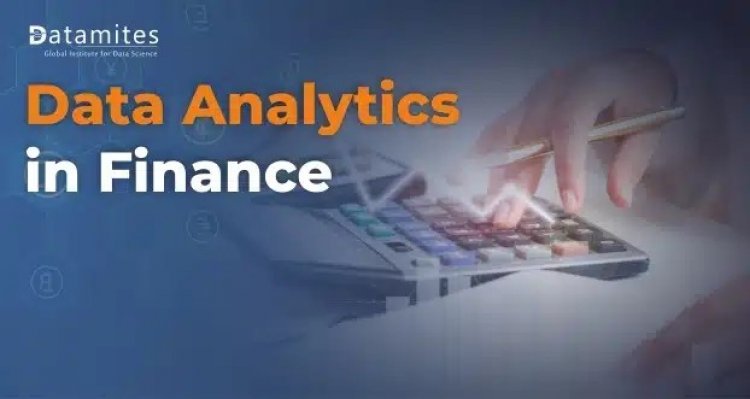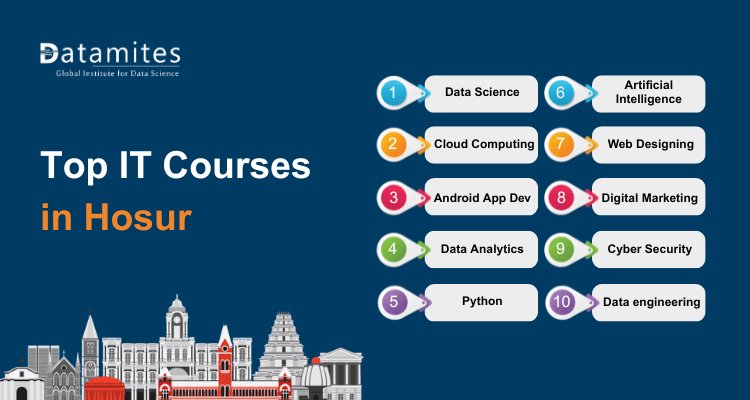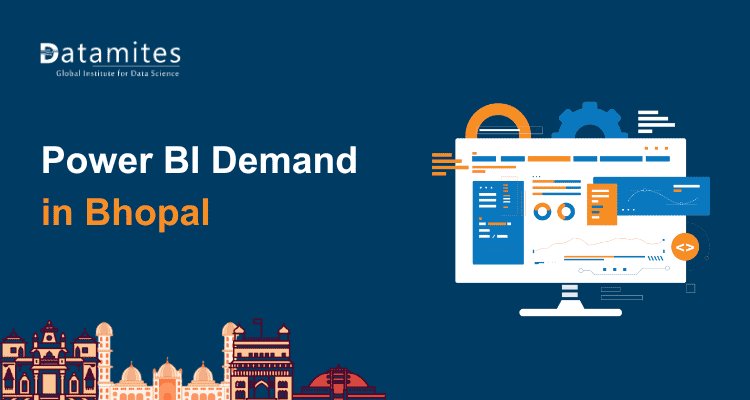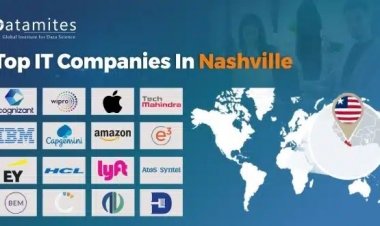Applying Data Analytics to Finance

In the current era of modernization, big data is altering commercial and technical settings. Every day, a considerable deal of financial events occur, and the financial sector is heavily involved in the calculation of these occurrences. Owing to this, there are an incalculable number of financial transactions and daily data generation in the financial sector.
Why is data analytics used in the financial industry?
Completely. Today, data analytics is a cornerstone of finance. There is no financial institution that can stand to not use data analytics. Big data has increasingly dominated many businesses in a very short amount of time, and the financial sector is no different. The fintech organizations have finally understood how crucial it is to fully utilize the created data in order to gain the most advantages. Moreover, the application of business analytics in the fintech sector boosts efficiency, offers outstanding solutions, and fosters the development of a customer-focused approach for the sector. However, it also reduces the number of scams and hazards present in the financial industry.
Data analytics in finance is used to examine financial data in-depth to discover vital information about its financial health and put into practice the necessary changes to improve performance. Businesses can gain fresh perspectives, estimate future profitability and sales performances, and develop efficient solutions to performance issues with the use of financial data analytics. Experts in financial data analytics are needed to develop dashboards and visualization software that analyses and presents financial data to decision-makers.
To improve the decision-making process, corporations employ them. Financial data analytics are used by organizations to carry out numerous essential tasks, such as developing corporate aims and targets, expenditures, budgeting, forecasting, and producing dynamic profit and loss reports. These objectives are applicable to the performance of the entire company and offer decision-makers in an organization a single source of useful data.
For a detailed overview of the data analytics application in finance, keep on reading.
Refer this article: How is Data Analytics Influencing the Educational Sector?
A thorough analysis of Financial Position
Organizations utilize data analytics to obtain detailed perspectives on their financial standing and identify areas like cash flow, performance, asset tracking, and enterprise value that require immediate and undivided attention and development. Organizations can trace out the root causes of these issues by drilling down into the depths of massive data in addition to providing information on industry trends.
Identifying Fraud
Despite the fact that reducing fraud is a typical objective for banks and other financial organizations, analytics may also be used to manage risks rather than just find fraud. Individual clients who are at risk of fraud can be identified and rated using analytics, and their accounts can subsequently get varying degrees of monitoring and verification. Banks and other financial institutions can now prioritize which fraud detection operation to focus on by analyzing the risks of the accounts.
Sales Performance Analysis
It’s true that every organization out there works towards attaining the final goal of profit, and financial organizations are no exception. Several things determine the answer to the question ‘Is a company performing well?’ How many people approach the organization? What service do they seek? What companies are generally profitable enough to have an impact on the economy?
Whether it be sales performance or cash flow analysis, performance analysis is just another way to gauge performance over time. It allows you to monitor and compare results over a number of different time frames, allowing you to see what’s going on at any given moment.
Internet Channels for Banking and Financial Procedures
Banks and other financial institutions approach the sales they make through their physical location and internet channels somewhat like a supply chain that they must control. The quantity of currency that banks have on hand, as well as what is entering and leaving the channel, must be considered here. The impact that data analytics has on the financial industry is startling and makes so much of a difference indeed. Branch sales are still considered to be the personal favorite for several people out there, indeed in terms of efficiency and flexibility ‘online channel’ takes the trophy doubtless.
Chatbots and Virtual Assistants powered by AI
AI-powered chatbots are just like friends online who are there with the whim of a second to assist you in dissolving any issues or questions you may have. They help significantly in cutting down the excessive time that regular employees spend on addressing and resolving the issues. Taking about the financial sector, AI-powered assistants come in handy to support knowledge management and client service, to substitute manual procedures like calling rooms and emails, and to boost consumer engagement through customized encounters.
Read this article: Support Vector Machine Algorithm (SVM) – Understanding Kernel Trick
Customized Advertising
The biggest difficulty facing financial institutions is controlling the demand side of the equation. Banks can profit from a system that provides them with access to customers they might not otherwise have by concentrating on their most lucrative clients. Banks must be aware of who their most valuable clients are if they are to do this. In the modern day, banks will make their marketing decisions based on data from a variety of sources.
Recommendation Engine
Banks and other financial organizations focus on attracting new consumers as well as how their present clients use the product they provide. Organizations are employing analytics to create prediction models that consider unique client attributes when managing the demand aspect of the equation. This may be credit scores, income level, or something else that could be utilized to analyze customer behavioral patterns.
Setting Budget
Every organization works with a budget set in mind. They strive toward excellence beyond the budget they have set. In such cases, data analytics comes into play and lends its hand to making budgets, planning expenses, investigating competitors’ performance, and bestowing firms with financial knowledge and insights.
Improved Decision-Making
The use of data analytics in finance improves internal decision-making and offers firms outstanding financial knowledge and insights toward reacting quickly to changing working environments. Data analytics in the finance industry also examines risks, enabling stakeholders to spot and steer clear of risky investment opportunities in addition to financial research and forecasts.
Customer Profit
Well, any company’s success depends on how much they are able to satisfy its customers. Happy customers equal happy businesses. Firms can examine every type of consumer and gain insightful information about how much each client contributes to the business. A client’s productivity assessment can assist in lowering default risks and losses. This aids in educating businesses about their ideal customer, which will be useful for future-focused marketing.
Value-based analytics
Value-driven analytics are used by organizations to set official goals and compile a list of goals for a strategy map. The organization’s value drivers are taken into account in this process. The process aids in the identification of the crucial components needed to achieve strategic goals. In general, this part of financial data analytics makes sure that value drivers assist the firms in achieving their desired performance results.
By emphasizing the importance of analytics in the business, financial institutions can cut back on waste and boost income. Data analytics can most definitely find issues within the production process, bottlenecks, and issues with stock ordering in bulk. By fixing the issue, the management team is able to save time and resources.
Also refer this article: Understanding Auc Roc Curve
The Future of Data Analytics in the Finance Industry
Data analytics is essential to the performance of financial institutions, therefore data analytics’ place in finance is safe in the future. After all, as the finance industry continues to digitalize, organizational executives will have to evaluate a whole chunk of data and find the best resource from among that to bring forth success to the company.
As per Data and Analytics in Financial Services, a startling 0.5% of organizations actually use their data, and data analytics in finance can assist businesses in maximizing the use of the data they gather. The sector has given firms new types of value since their inception, either through increased income or more effective operations. Data analytics holds the greatest promise for bringing new sources of revenue for businesses.
To meet the constantly changing and expanding client expectations and to remain competitive in the burgeoning fintech market, the baking sector must make use of this enormous amount of data. In contrast, financial organizations like banks must use data sets to improve their understanding of their customers. Big data has been used by a sizable portion of market participants, but many businesses are yet to fully grasp its importance.
What is HR analytics?
The Final Say
Are you interested in learning some tips on how to succeed as a data analyst in the finance domain? As said, some of the most important analytical and technical skills needed in the domain of data analytics in finance are statistical inference, database query, financial risk analysis, financial modeling, and risk analysis. While some of the prominent professional skills expected from data analytics professionals in the financial industry are leadership skills, effective communication, project management capabilities, critical thinking, interpersonal skills, and teamwork.
If you’re interested in starting a career in data analytics, DataMites provides Data Analytics Courses in partnership with NASSCOM, JainX, and IABAC, all of which have a global reputation. DataMites also provides courses in data science and related technologies like artificial intelligence, data engineer, and python. Learn data analytics from professionals in the field through DataMites to get ready for this fascinating, expanding career!
What is Box Plot







